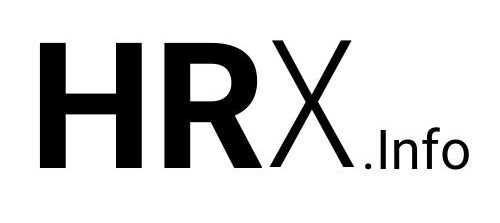By Chris Babigian
As you know, immigration is all over the news these days, and businesses need to be prepared should an I-9 Notice of Inspection land on a client’s doorstep courtesy of Homeland Security Investigations (HSI).
In 2019 alone, during the first Trump administration, HSI initiated 50% more I-9 audits than during all four years of the Biden administration combined. Upon returning to office earlier this year, the second Trump administration seems to be picking up the pace again.
On Inauguration Day, President Donald Trump signed an executive order titled Protecting the American People Against Invasion. The order underscores the administration’s goal of “comprehensive” enforcement of U.S. immigration laws. In an October 2024 interview with 60 Minutes , Tom Homan, the current executive associate director of enforcement and removal operations, highlighted the role of work-site enforcement in achieving this goal.
While a polarizing and often personal topic for many Americans, the implications for employers are clear: early reports already indicate an increase in audits with more to follow.
Technology Considerations
Most employers utilize onboarding platforms to efficiently complete and store I-9s electronically. For these organizations, reviewing their underlying technology is a crucial—yet often overlooked—aspect of self-assessment and audit preparation.
In 2006, the U.S. Department of Homeland Security first published interim regulations establishing baseline requirements for the “Electronic Signature and Storage of Form I-9.” These rules were later finalized in 2010, with limited modifications, and remain in effect.
In addition to outlining a series of core standards, the regulations also establish penalties for system failures: noncompliance with the regulations or document retrieval issues could cost employers up to $2,861 per I-9, even for employees who are authorized to work.
Electronic I-9 Regulations Overview
There’s a lot at stake for employers. Given the financial risk, employers and service providers should familiarize themselves with the electronic I-9 standards. Under the regulations, the following system features are necessary to ensure compliance:
- Audit: Any actions taken by users of the platform to create, complete or modify an I-9 must be tracked and preserved with the I-9 record to establish the document’s integrity.
- Electronic Signature: Employees completing Section 1 of the I-9 must be presented with the attestation from the paper form. They must confirm that they have read it, and their electronic signature, along with information verifying their identity, must be affixed to the document. The same requirements apply to employers and authorized representatives completing Section 2.
- Documentation: Employers must maintain documentation outlining the I-9 completion process and other key features that demonstrate compliance with the regulations.
- Indexing: Completed, stored I-9s must be readily accessible via an efficient and organized display or search functionality, similar to a traditional paper filing system.
- Security: Access controls, backups and the aforementioned audit trail are key to satisfying this standard.
- Storage: Documents must be stored in a way that preserves their integrity, accuracy and readability. To ensure compliance, safeguards, including regular quality assurance reviews, are required.
Service Provider Implications
HR outsourcers, especially Professional Employer Organizations (PEOs), are often in a unique position when it comes to electronic I-9 compliance. Some PEOs have historically assumed the role of the employer on the I-9. Traditionally, they have had all existing employees of a new client complete a new form when entering the PEO relationship. Others have deferred I-9 compliance to their small and medium-sized business (SMB) clients.
Regardless of the approach, all service providers become active participants in the I-9 process when they offer an electronic I-9 platform to their clients. Not only do they dictate which platform is used, but also—through configuration choices—they influence how it operates. When faced with an audit, SMBs will inevitably turn to their service provider for guidance in navigating the system. At worst, the provider could be held accountable for I-9 compliance penalties; at best, a provider will play a critical role in ensuring their clients’ success.
6 Electronic I-9 Takeaways for HROs
What can you do to help your clients navigate this rocky terrain? Here are six tips to help you and your clients stay in I-9 compliance:
- Review Your I-9 Platform: Many of the system features required by the regulations are easily discernable, such as an audit trail, e-signature process, access controls and indexing. Verify your system has these core features in place.
- Talk to Your Technology Provider: Backup and storage practices may be outside your domain, but that doesn’t mean they aren’t part of your responsibility. Talk to your technology provider to better understand how documents are maintained and how quality assurance practices are used to ensure document integrity.
- Ready Your Documentation: In the event of an audit, HSI will likely request documentation describing your I-9 platform. Make sure this is up to date and accessible.
- Know Where ALL I-9s Are Stored: Service Providers often use multiple platforms and occasionally change technology partners. When they do, I-9s can easily be lost in the shuffle. Determine if you have I-9s that were completed and stored on older platforms, and ensure you still have access to these documents.
- Check Your Configuration: Access controls and other I-9 features may be configuration-based. Familiarize yourself with the options available to you, and ensure your settings align with your business needs and practices.
- Encourage Proper System Usage: How many times have you clicked through an online agreement without reading a single word? Now, consider how often clients and employees might show the same lack of concern with an electronic I-9, overlooking critical details. Technology’s ease of use can sometimes mask the real risks involved. From time to time, clients may need a friendly reminder of the potential consequences of noncompliance.
Watching for Developments
While immigration enforcement trends and requirements might be in a state of flux, compliance doesn’t have to be. PrismHR will continue to monitor these and other payroll- and HR-related developments.
After all, keeping HROs and their clients in compliance is our custom.
This blog was compiled for informational purposes only and should not be considered legal advice. If you have specific legal questions, we recommend you contact your legal adviser.

Chris Babigian is PrismHR’s compliance strategy manager. A graduate of Boston University School of Law with a focus in taxation, Chris spent five years handling motions, appellate briefs and trial discovery for a civil litigation firm. In 2014, Chris transitioned to PrismHR, where he translates regulatory requirements into software solutions.










